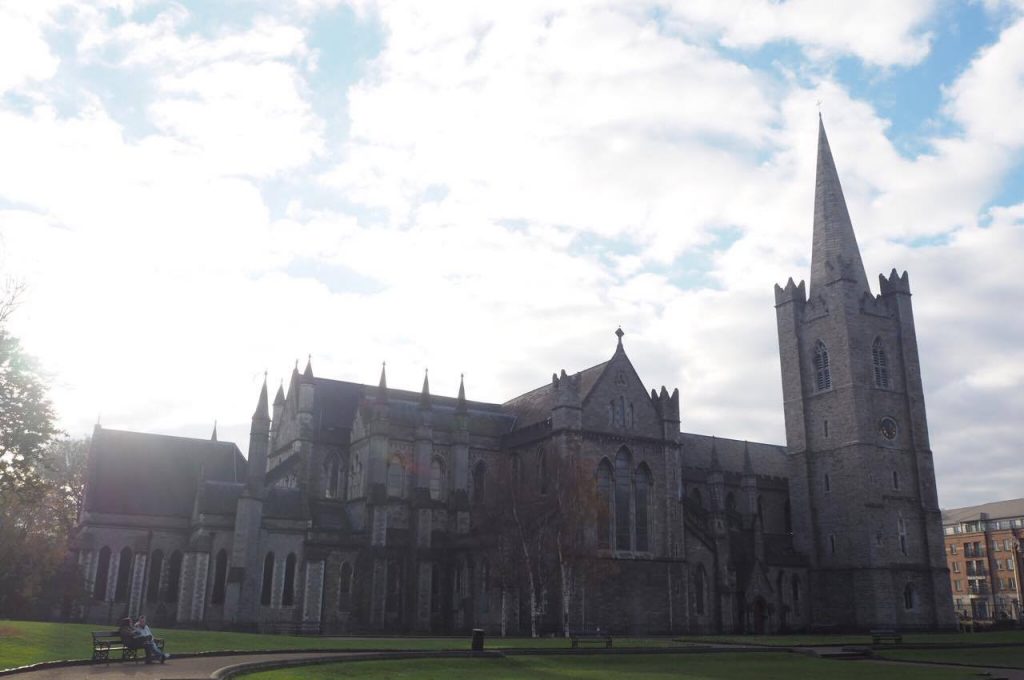
One of the beauties of Dublin is Saint Patrick’s Cathedral: it is the biggest church in Ireland and was built in 1191 in honour to the patron saint of Ireland.
When you enter this place, immediately you can feel the calm and peaceful atmosphere… the walls exude history and everything around you has provides something to talk about…
This Cathedral has its foundations on one of the most ancient Christian sites of the city. The actual structure, in fact, was built in the vicinity of a renowned well, which was used by the saint in 450 A.D. as a font for the Irish who wanted to convert to Christianity.
The origins of the Cathedral belong to the XII century, when there was a structure following the primitive Gothic style. The new church was erected as a cathedral in 1191 and from that moment it maintains the same function, being the Anglican Church of the Republic of Ireland.
My suggestion, when you visit this place, is to take a guided tour as they explain the history of this holy place and make the place come alive.
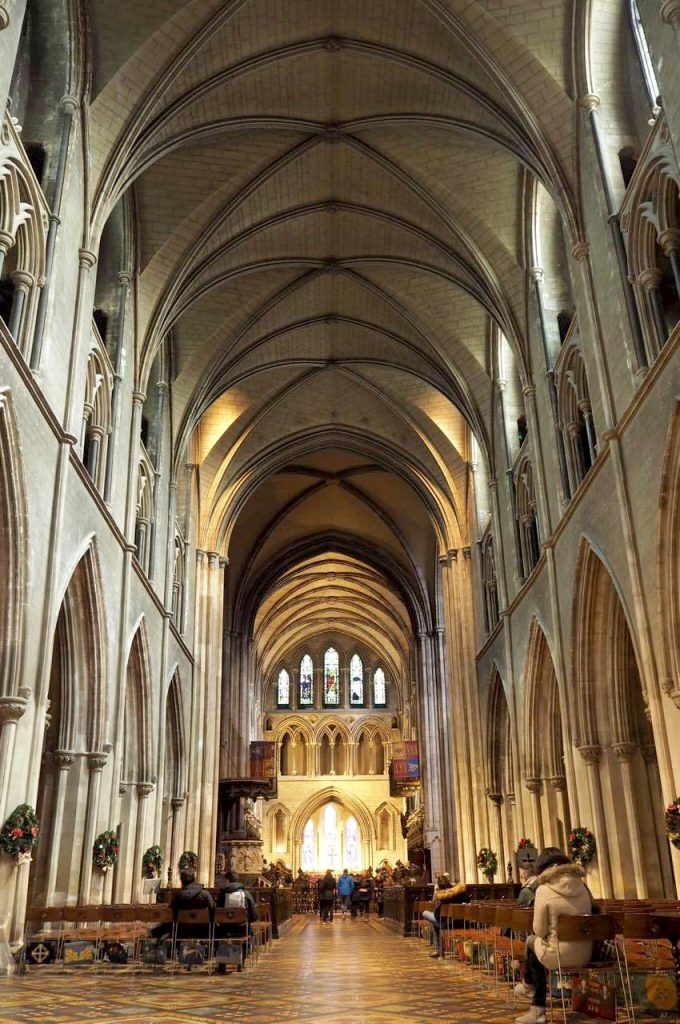
When you get in, on the left, you will notice a huge monument, “The Great Boyle Monument”, which was erected in 1632 by Richard Boyle, Earl of Cork, in memory of his second wife, Lady Catherine. Their children surround them on the lower tiers of the monument. They include Robert Boyle, the famous scientist who discovered “ Boyle’s Law”.
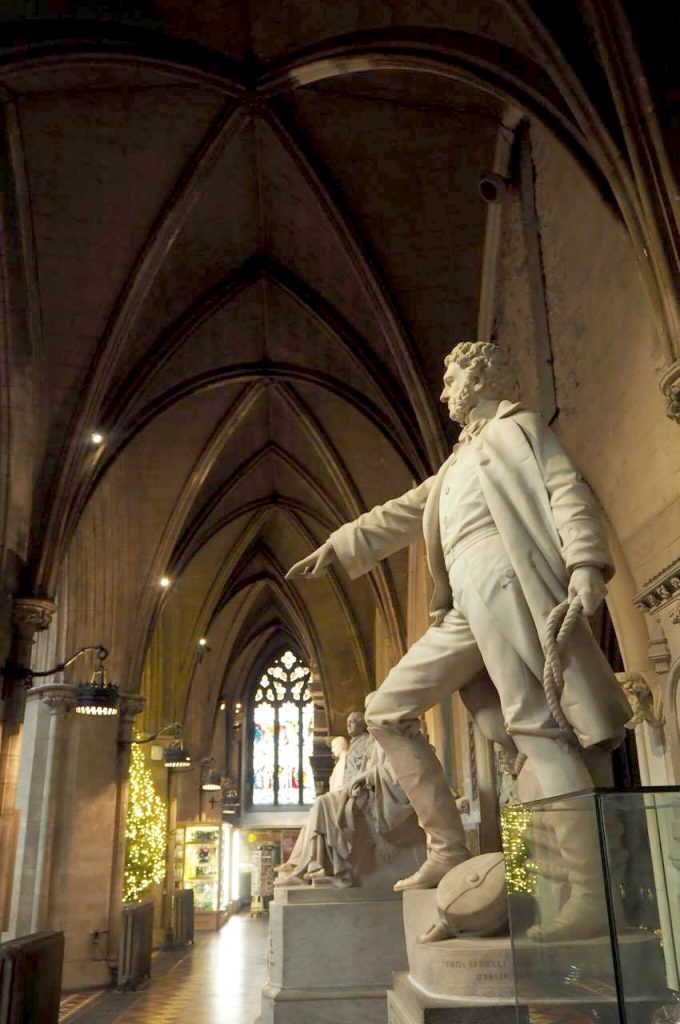
The second step is a story about a door… at fist it seems not to be so interesting, but the story behind this door there is the “peace contract” between two feuding families: the Butlers of Ormonde and the Fizgeralds of Kildare. Once they entered the cathedral and argued through the chapter house door; Gerald Fizgerald offered an end to the fighting by putting his arm through a hole in the door not sure if it was going to be cut off and the two families shook hands and made peace. This is the origin of the expression “to chance your arm”.
Just opposite this door, there is the spiral staircase which leads to the cathedral organ. Music has played an integral part of the Cathedral’s history since its foundation in 1191. If you walk ahead you will see that the North Choir Aisle features two significant burials: one is Fulk De Saundford, archbishop of Dublin and the first known person to be buried in the Cathedral; opposite him is the grave of the Duke of Shomberg who was killed in the Battle of the Boyne in 1690.
The deeper part of the church is the Lady Chapel, which was built in 1270- and was used by the Huguenots from 1666 to 1816. This area is used as an area for quiet reflection and as you will see it is the most beautiful, peaceful and brightest part of this place.
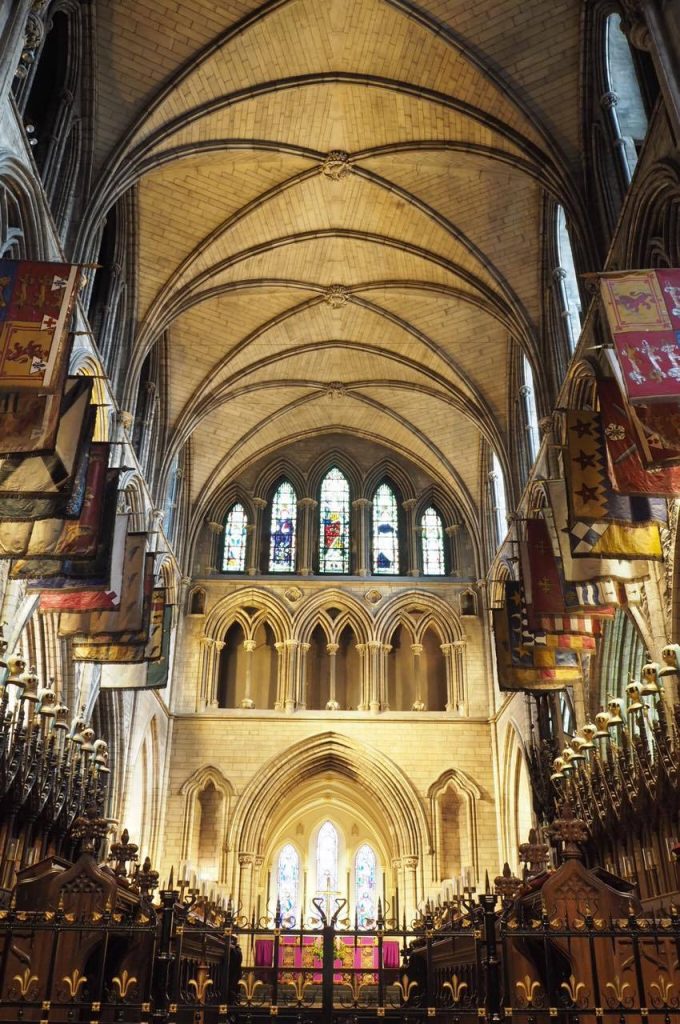
Then, if you go exactly in the middle of the church you will find the most important part of it: the first two rows of the stalls are used by the choir; two services are sung daily within school term, Matins in the morning and Evensong in the evening.
Above the seats you will find banners and hatchments of the knights of Saint Patrick, a chivalric order. If you walk on the right, you will find an unusual stone statue of St. Patrick, which is composed by three different parts: the body is 13th century, the head 14th and the base 19th. It was put up together in the 19th century during the restoration of the church.
The last thing that you will visit is the epitaph of Jonathan Swift, the famous writer. He was not just famous as an author but fought against social injustice for the Irish people, and with his writings he helped to prevent a debased currency from being imposed by the government on the Irish people. The Cathedral today holds many artefacts connected to Swift’s time in the cathedral, such as the pulpit from which he preached his sermons and a table used by him to celebrate the Eucharist. The Cathedral also has early editions of his writings including “A sermon upon sleeping in Church”, two of his death masks and a cast of Swift’s skull. His grave is marked by a simple brass plaque on the floor at the west end of the Cathedral, adjacent to his great friend in life, Stella.
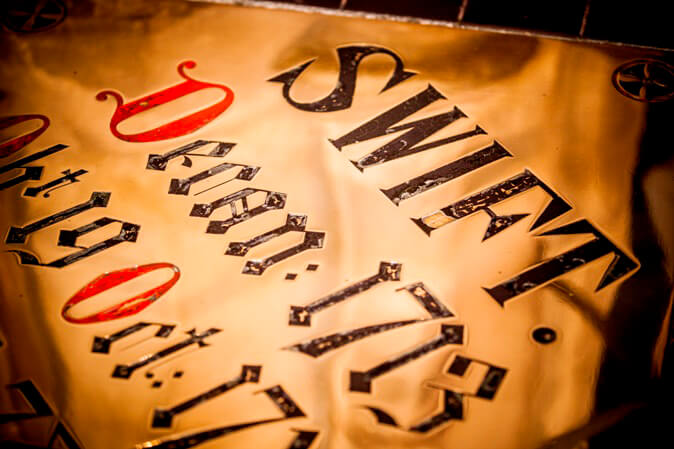
As you can see there are so many things that are waiting to be discovered… so let’s have a walk through the history of this gorgeous Cathedral!

